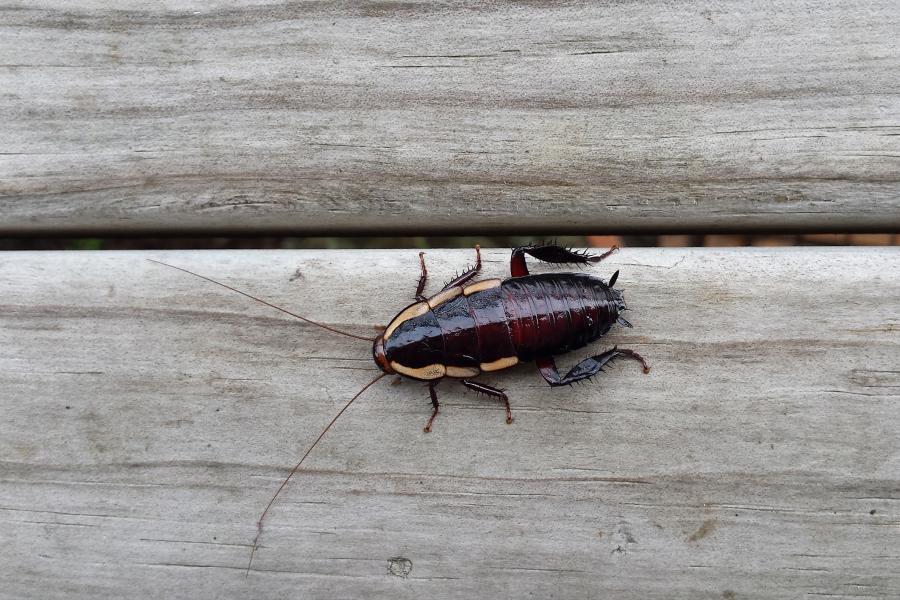What emotions do these images of animals evoke in you?


Gisborne cockroach,
5-8-2018
Nurg
A Gisborne cockroach crawls upon decking boards.
More about this image-
Bright emotions
-
Not at all Extremely
-
-
Quiet emotions
-
Not at all Extremely
-
-
Heavy emotions
-
Not at all Extremely
-
-
Sombre emotions
-
Not at all Extremely
-
Species: Gisborne cockroach, Drymaplaneta semivitta
Location and habitat: South West Australia, introduced to NZ
Conservation Status: Unknown

Compare yourself to others
Choose different variables below, and see the patterns of response reflected in the circle of emotion above. Your responses are the coloured wedges. Others' responses are averaged in the spider graph of lines and dots.

Creator: Nurg
Date: 5-8-2018
Medium: Photography
Copyright: Creative Commons
It is popularly claimed that cockroaches will 'inherit the earth' in the event of nuclear winter, or other such calamity that humans in the process of bringing upon ourselves. And indeed, some cockroaches are very hardy, being able to remain active without food for extended periods of time, tolerate a wide range of temperatures, and be resistant to far higher levels of radiation than humans. It is this fable toughness that saw a cockroach named Nadezhda (Russian for 'Hope'), blasted into space whereupon she became the first animal to conceive in space, birthing a healthy litter of 33 babies upon her return to Earth and its gravity. Nadezhda was recruited from an anonymous government building in Voronezh, with the results of the research being published in the scientific journal, Aerospace and Ecological Medicine.
Rather than being regarded as heroic cosmonauts, or heirs to our ruined world, many people regard the cockroach with fear and distain, owing to their co-habitation with humans, potential to passively transport pathogens, or trigger allergies. Type the word 'cockroach' into a search engine and the first prompts that come up is 'how to exterminate them'. Their very name is sometimes used as an insult, being employed by genocidal Hutus in Rwanda, and nasty British tabloids against people seeking refugee. Yet, in other parts of the world, coaches have different cultural resonances, for instance, in Thailand, Mexico and elsewhere, they are sautéed and eaten, and in China they are farmed and used as ingredients in traditional medicines and cosmetics.
Actually existing cockroaches are far more complex that the vermin image conveys. There are around 4,600 species thus far described, of which 30 of which are known to live in human-made habitats, and only four are considered pests. Roaches gregarious creatures, closely related to termites and mantises, with many of them exhibiting elaborate social structures, kin recognition, and collective decision-making behaviour. Pictured here is a Gisborne Cockroach, a species first described by the British etymologist Francis Walker in 1868, based on a specimen returned to the British Museum from Gisborne, New Zealand. Yet, this species was fairly recently introduced to New Zealand, likely unwittingly brought over on a timber shipment from their indigenous region of the south western corner of Australia. Drymaplaneta semivitta, as it is formally known, is a large roach with no vestigial wings, and are strongly associated with decomposing wood. They are not known to infest human food, nor spread disease. This particular one was peacefully removed from the photographer's house in Auckland.





